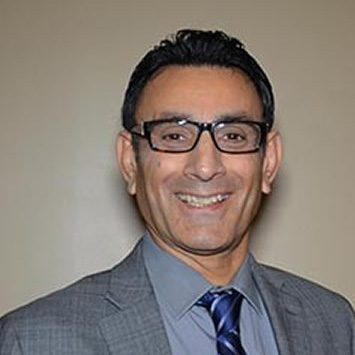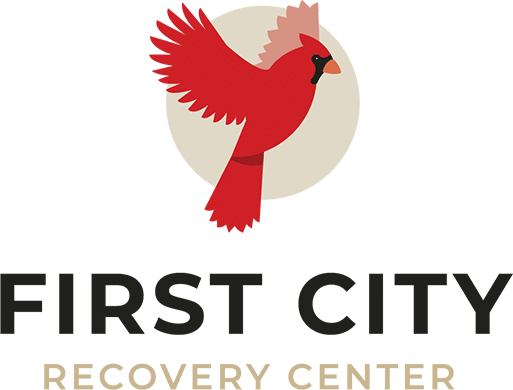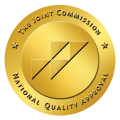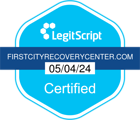Inpatient Rehab in Fort Wayne, Indiana
Table of Contents
ToggleHow Inpatient Rehab in Fort Wayne Works
Drug addiction has been on the rise over the last decade throughout the nation, and Fort Wayne, Indiana is no exception. While overcoming a dependency can be challenging, recovery is possible. The most crucial step is reaching out for help. Many people need additional support to maintain their sobriety and avoid relapses. One effective alternative is checking into an inpatient rehab center. If you stay in a treatment facility while you recover, you’ll have access to addiction treatment professionals who will guide you through the journey. The treatment centers in Fort Wayne vary, and they offer an assortment of programs. Centers are often tailored to clients’ particular needs and their situation. Different people use different substances. This means that the rehabilitation program has to be tailored to the individual client and the substance they use. You have to consider several variables before you find the right fit.Background of Fort Wayne
Located in northeastern Indiana, Fort Wayne is the county seat of Allen County. The city is 50 miles south of the Michigan border and 18 miles west of the Ohio border. Fort Wayne is a city full of culture and is one of Indiana’s economic centers. It has a population of about 275,000. The city came about in 1794 under the jurisdiction of the United States army. Around this period, Anthony Wayne, who was a brigadier general, built several forts. Fort Wayne was the last one. It was named in his honor and became an economic hot spot with many trades taking place. The economy of the area has flourished ever since the 1800s. Its sectors include business, healthcare, and finance. Fort Wayne remains the center of the defense industry, which is one reason for the high population and many employment opportunities in the area. The geographical position of Fort Wayne has always been a source of attraction. The city is divided into three parts by two rivers: the St. Joseph River and St. Marys River. With the increased population over the years, many residents have faced several challenges. Drug addiction is one of the challenges they still battle.Inpatient Rehabilitation
This is a common rehabilitation treatment that has been used over the decades. It’s more effective than other approaches for substance use disorders. Some of the facilities that employ the treatment tackle addiction, while others specialize in mental health issues. Addiction is often quantified by the period of use. Clients come with a spectrum of disorders, ranging from mild to moderate to severe. Inpatient rehabilitation is more efficient for clients who are at the end of the spectrum, and it’s advisable for clients who suffer from co-occurring disorders. This is a unique condition where the client suffers from both mental health and substance use disorders. Examples include opioid addiction and depression or alcohol addiction and anxiety. Inpatient centers are residential and are all licensed by the government. We offer comprehensive and structured care that is available 24 hours a day. Clients are surrounded by our professionals who provide proper medical attention, a substance-free environment, and a safe shelter at all times. The initial step once you join our program is detoxification. The program can last 30 to 90 days. Further treatment is usually necessary, and many inpatient rehabilitation centers offer additional options.Therapies in Inpatient Rehabilitation
In Fort Wayne, different centers use different programs, and the strategies vary from one treatment center to another. Some focus on the nature of the client, whereas others focus on the specific substance. Often, what works for one client will not necessarily work for another. While selecting a treatment center in Fort Wayne, it’s important to consider all the factors, such as: ● Age ● The financial status of the clients and whether they have insurance ● Medical history ● Type of substance used ● The severity of the substance use disorderTreatment Methods in Fort Wayne
There are numerous treatment methods when it comes to inpatient rehabilitation. Some of the most effective methods are outlined below.Person-Centered Counseling
This therapy revolves around the client. In this treatment, we aim to assist our clients without any judgment. We try to engage them as much as possible so that we can understand their issues better. This helps us to better handle the situation. Frequent motivation and talks can make a massive difference to the goals that our clients wish to achieve.Cognitive Behavioral Therapy
Cognitive Behavioral Therapy (CBT) is a talking therapy that aims to change behavior patterns and alter the client’s thinking. It’s a psychotherapy treatment that focuses on changing the clients’ thought processes. The whole process is goal-oriented, and we focus on the client’s attitude, beliefs, and the root of their problematic behavior.Contingency Management
Contingency management is often referred to as evidence-based therapy. In this treatment, clients with positive behavioral change are rewarded. This reinforces the habit and improves their behavior over time. The therapy is based on behavioral analysis and encourages good conduct among the clients.Dialectic Behavior Therapy
This treatment, sometimes referred to as DBT, focuses on psychotherapy. It is similar to cognitive behavioral therapy, with more emphasis on the social aspects of recovery. The treatment is useful for clients who experience social disorders such as mood swings. Clients work closely with the therapist in activities like role play and consistent practice.When Is Detox Necessary?
Heavy and consistent use of drugs over a long period lead to dependence. This means that you’re likely to experience withdrawal symptoms if you stop or reduce taking the addictive substance. The intensity of the withdrawals varies from one person to another. The level of intake of the substance also determines the severity of the withdrawal symptoms. Most of these symptoms are not fatal. They’re stressful, though, and it can be challenging to get through detox. If you experience withdrawal symptoms for an extended period, they may necessitate medical attention. If you have been drinking alcohol in large amounts for the last few years, you could experience life-threatening seizures once you stop. Withdrawal symptoms can become life-threatening if they’re not well monitored by a medical expert. Such complications are rare, and they depend on the level of intake and the period of the substance use. Some of the symptoms can be managed by therapy in an inpatient treatment setting, and medications can be administered to ease the discomfort. Substances whose users have frequent withdrawal symptoms include sedatives, opioids, and stimulants. Some of the symptoms experienced include: ● Difficulty when trying to sleep ● Change in appetite and mood swings ● Hallucinations and seizures ● Diarrhea and body tremors ● Rapid pulses ● Vomiting or nausea ● Strong cravings ● Tearing eyes or running nose ● Sweating or fever ● RestlessnessWhen Is Inpatient Rehabilitation Necessary?
We would advise inpatient treatment for clients who fall into these four categories: ● Clients who have ever experienced a relapse ● Clients who have tried other treatments that did not work ● Clients who suffer from a co-occurring disorder ● Clients who are at risk of experiencing withdrawalMerits of Inpatient Treatment
Here are some merits of inpatient treatment to consider: 1. There is a structured program that our therapists use to keep clients on track with their recovery process. The programs are unique for each client, and each has its therapy schedule. 2. Being around people with the same challenges gives the clients a sense of community, and they feel they’re not alone in the fight. Group therapy also prepares the clients for the community and is a good recipe for dialectic behavior therapy. 3. Detox on your own can be very challenging and being surrounded by a group of professionals streamlines the process. We offer 24-hour medical assistance, ensuring our clients are always in safe hands. 4. We offer additional support to some clients who need our services after leaving the treatment center. Counselors ensure that these clients have the support needed to lead a healthy life after leaving the premises. 5. Some clients need special attention, such as certain diets, to recover from the detox stage. Your clients can consult nutritional specialists who prioritize their physical health.Inpatient Rehabilitation Timeline
A rehabilitation program can last 30 to 90 days. The program involves five stages:1. Evaluation
Once clients arrive at our center, they are received by our staff. They are then screened and clinically assessed. This takes a couple of hours and is followed by a urine test. Our therapists then interview the clients to determine the best treatment plan for them.2. Detoxification
Detox is the phase of the treatment where we stop the substance use. Many of the withdrawal symptoms take place in this phase. Some clients have mild withdrawal symptoms, while others may experience seizures or hallucinations.3. Medical Treatment
Our therapists administer their treatments during this phase. Usually, one-on-one or group counseling complements the medial treatment. Clients are constantly evaluated to determine their progress.4. Transition
Transitioning from substance use to sobriety can be challenging for clients. We offer step-down programs that ease the whole process. Our counselors provide the support needed to clients to make sure that they transition smoothly.5. Maintenance
Once the clients are comfortable with sobriety, we start offering outpatient treatment. This often goes hand in hand with counseling to ensure that clients do not lose track of their progress or go back to abusing substances. This phase can last for years or even for the rest of the client’s lifetime.Preparation for Inpatient Rehab
Frequently, clients may be scared at the idea of entering an inpatient center. However, minor preparation steps can come in handy to help with the process. These steps let you calm your nerves and bring positivity out of the experience. They include:Tying Up Loose Ends
Sharing information with friends and family can go a long way to make the transition into rehab much smoother. At times this might be uncomfortable, but your family can give you the support needed and can handle what you leave behind as you join our center. This can include paying your bills or taking care of your children.Pack the Essentials
When clients join the inpatient treatment center, there are some essentials that they must carry with them. They include: ● Government ID ● Comfortable clothing ● Medical insurance card ● Emergency contact information ● Current medications and prescription cards ● Personal hygiene products ● Credit or debit card We also recommend that clients come with items that they might feel comfortable with. This could be something sentimental or an item that serves as entertainment.Adjust Your Attitude
It’s normal to feel nervous at first. This is OK. The recovery process is far from easy. However, our professional staff have your best interests at heart and are there to guide you from day one.Relax
Having your mind at ease will help you navigate the program in an inpatient rehabilitation center. Our team is committed to ensuring that you have a smooth experience, and its members are always open to engaging in activities that make you feel relaxed. Are you or a loved one struggling with a substance use disorder? Contact us at First City Recovery Center for more information on how we can help.
Dr. Vahid Osman
MD, Psychiatrist
Dr. Vahid Osman, MD is a psychiatry specialist in Indianapolis, IN.
Dr. Osman completed a residency at Austin State Hospital. He has over 32 years of experience in Psychiatry & Behavioral Health. He is board certified by the American Board of Psychiatry and Neurology.




